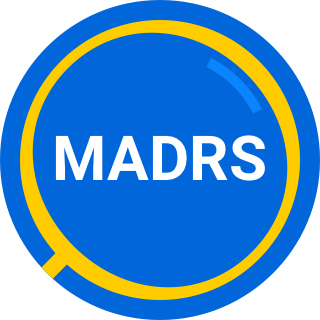Clinician's administration may influence the subject by how they explain the question. Interpretation of the subjects response may also be hindered by the clinician even when methods are present to prevent interviewer biases.
The scale can be used by trained nurses and psychologists as well as by psychiatrists.
The 10 items included in the Montgomery-Åsberg Depression Rating Scale (MADRS) are all core symptoms of depressive illness. A few characteristic symptoms are, however, not included. Motor retardation is perhaps the most conspicuous omission. It was excluded from the primary selection, since it occurred in relatively few patients.
The MADRS is particularly sensitive to treatment effects.
The inter-rater reliability of the new depression scale was high. Scores on the scale correlated significantly with scores on a standard rating scale for depression, the Hamilton Rating Scale (HRS), indicating its validity as a general severity estimate. Its capacity to differentiate between responders and non-responders to anti-depressant treatment was better than the HRS, indicating greater sensitivity to change.


